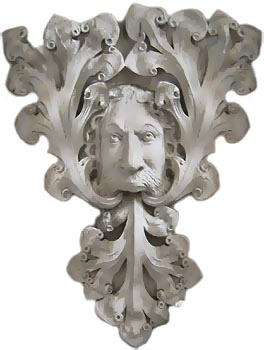|
 St. Augustine
of Canterbury said that new Christians
should convert pagan temples into Christian
churches. These might be
Roman temples, Celtic sacred groves or Saxon temples or
groves. Look
out for: St. Augustine
of Canterbury said that new Christians
should convert pagan temples into Christian
churches. These might be
Roman temples, Celtic sacred groves or Saxon temples or
groves. Look
out for:
- Saxon placenames named after their
pagan gods and ending in -ley. These show where there were pagan
sacred clearings or 'groves'. This was probably on the site of
the present-day church.
- Round or curved churchyards. These
are thought to show the round temenos (boundary) of
Romano-British temples.
- Churches on lonely prominent hills.
They may replace pagan temples as these were popular spots to
build them.
- Churches dedicated to St. Michael
(especially on hills). He was the archangel who defeated the
Devil. So churches on pagan sites were dedicated to him because
he was the best saint to stamp out the old pagan gods. Are there
any near you?
- Churches dedicated to some other
saints:
- St. George who killed the
Dragon just like St. Michael defeated the Devil.
- St. Leonard had many churches
in rural areas and may have replaced Cernunnos, Celtic god
of the Countryside.
- St. Catherine (often on hills)
had the wheel on which she was killed as her symbol. She may
have replaced the Celtic chief god, Belenos, whose symbol was
also the wheel.
- Carvings in churches of naked men
or women, green men (faces with leaves growing from them,
especially out of the mouth) & woodwoses (hairy giants,
especially in Suffolk). They were put there in medieval times to
remind people to stay away from pagan ideas.
- Holy wells. They are water springs
named after Christian saints. They were probably first named
after pagan gods. St. Anne is very popular. The name was
probably converted from Anu, the Celtic Earth goddess.
|

